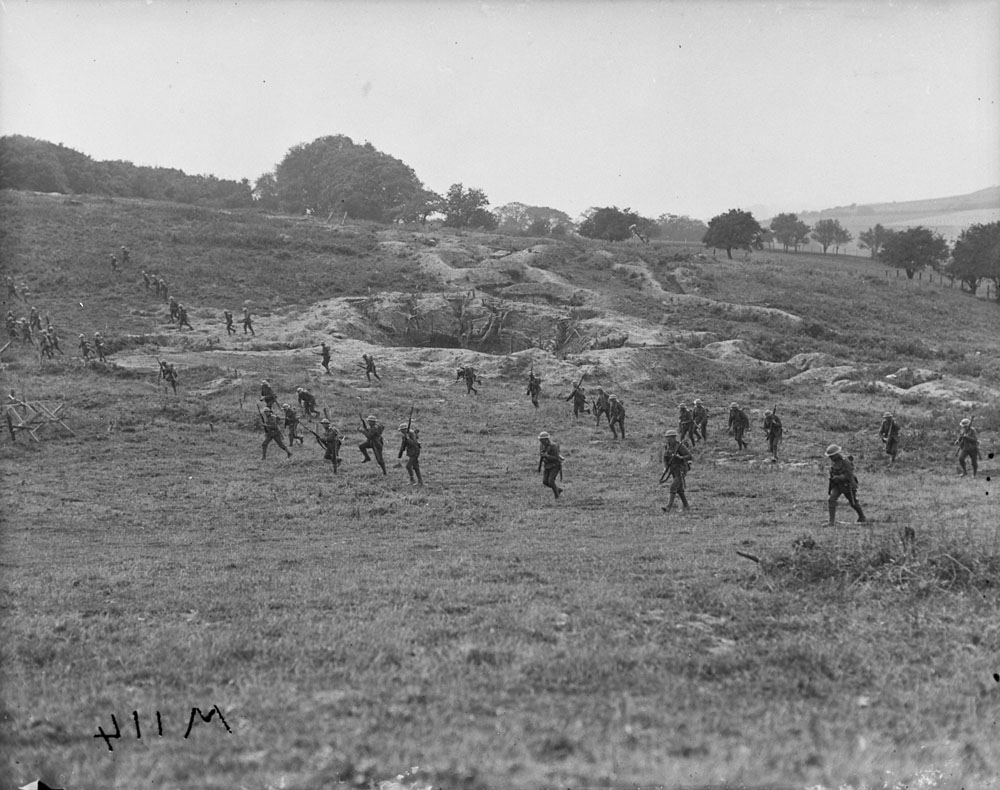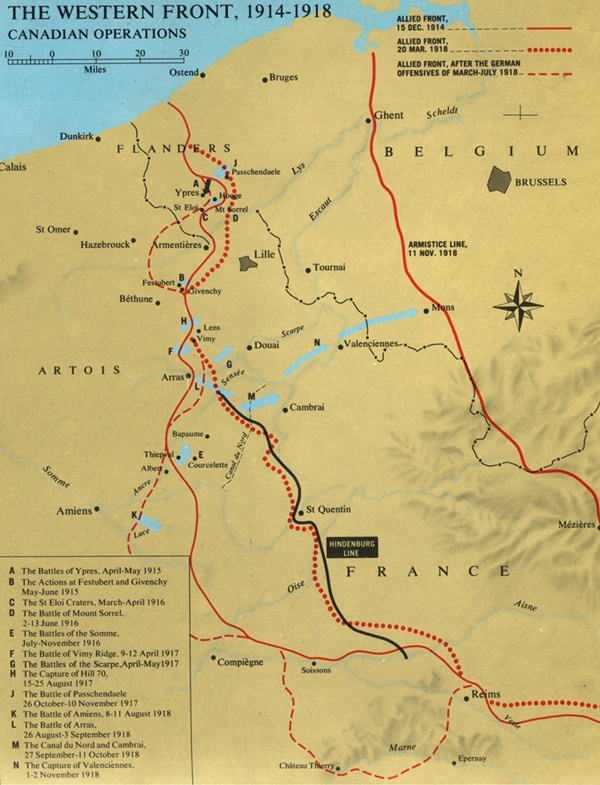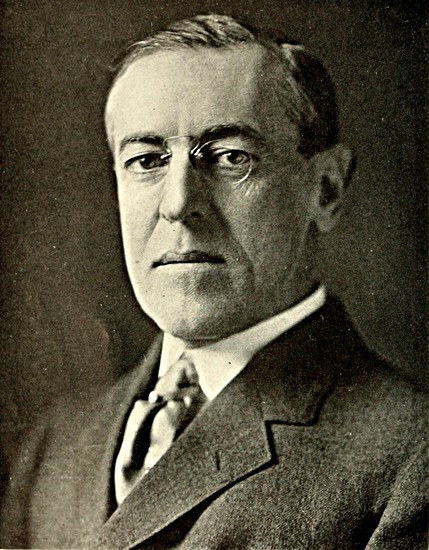Ending the War
Currie's Corps and Restructuring in the British Expeditionary Force
As a result of the continuous attritional fighting and in response to changing strategies and tactics, the B.E.F. restructured their fighting corps in order to create more divisions. The trade-off would be that the battalions and brigades would have fewer men. To Currie, this meant nothing other than a weakening of the groups fighting the battle. He wanted none of it and pushed back against Haig and the other leaders in Britain. Currie’s stand on this point may be the single most important factor in determining the Canadian force’s strength for the remainder of the war. In fact, while every other Entente Corps was creating new divisions by taking a portion of men from existing divisions, the Canadian’s were allowed to break up their 5th Division (training in Britain at that time) and use it to strengthen their other 4 divisions currently in France. This meant that not only did those other divisions gain the manpower, but they also gained the artillery, machine guns, mortars, et cetera, as well. Currie got his wish. Now his 4 divisions were each a few thousand infantry over-strength, each totalling around 12 000 men. With British divisions now down to about 8 000 and with many German divisions at roughly the same strength, Canadian divisions now had a huge advantage in numbers, both in terms of greater attacking power and also in terms of their capacity to sustain intense combat with the enemy. These aspects allowed the Canadians to continually pressure the German defenses.
In addition to having more soldiers than other Corps, the Canadian Corps had also taken many lessons-learned to heart and had incorporated them into their fighting. Artillery barrages were more precise and adequately flexible to meet the demands of the operation planners. The number of heavy guns, howitzers, and mortars available were increased and employed. Remember: Shells instead of lives! Machine guns, predominantly used to defend, were now utilized in an offensive role to “thicken” fire in order to suppress enemy defenders of strongpoints. Infantry units were given more of these weapons and additional grenades. Specialized machine gun battalions, some mobile, were created.
Currie also increased the size of the engineering battalions for a few different reasons, one of which was to give the fighting infantry a respite from the physical labours required to maintain the front. Another was to better provide infrastructure that was critical for supporting the troops. Two new transport companies were created to facilitate the delivery of supplies. Looking back now, it seems obvious to the observer that the reputable Canadian fighters were being fine-tuned to act as a strike force. If successful, the Entente would soon have its own Stormtroopers, units that were incredibly similar to Germany’s “Sturmtruppen” who led the way during the “Kaiserschlacht” of spring 1918.
Losing Russia
While the B.E.F. began to restructure in late 1917, back in Russia, Bolshevik (Joseph Stalin, Vladimir Lenin, Leon Trotsky) and Socialist figures took political control (November 6-7, 1917). Next, they tried to create peace with Germany, first by signing a ceasefire on December 4, and then by signing an armistice on December 15. On the 3rd of March, 1918, the eastern front was stabilized for Germany when the Treaty of Brest-Litovsk was signed. This gave the German High Command the opportunity to take approximately 35 full divisions from the front in Russia and move them to the west where they could be pitted against the remaining members of the Entente.
Gaining the United States
In a stroke of good timing, American soldiers had started to arrive at the western front back in October 1917. Even though they were very inexperienced, their numbers somewhat offset the westward movement of enemy soldiers from the Russian front during the winter of 1918.
If there is one thing for sure, the American presence gave the Entente forces a huge psychological boost. Consequently, many French, British, and Belgian leaders were strategizing towards an end to the war in 1919 when the hundreds of thousands of U.S. troops could be thrown with full force against the tiring Germans.
Kaiserschlacht
German Spring Offensive 1918. Mortars. Howitzers. Artillery Techniques. Barrage Types.
Final 100 Days
R+R. Train. Shock Troops. Amiens. Drocourt-Queant. Canal du Nord. Cambrai. Valenciennes. Mons.
Armistice
Conditions. Versailles. Requirements for Peace. League of Nations. Supplementary Treaties.
Ending the War Quiz
1918. Canadian Corps. Final 100 days. Battles. Lives Lost. Treaties.





